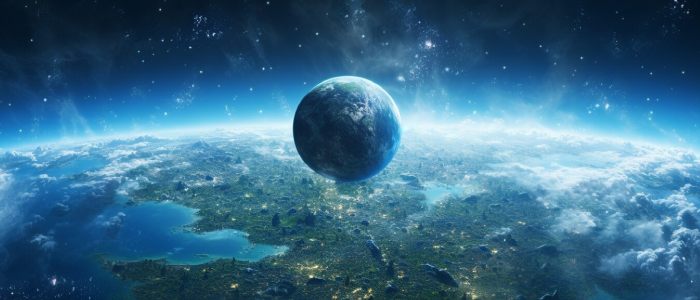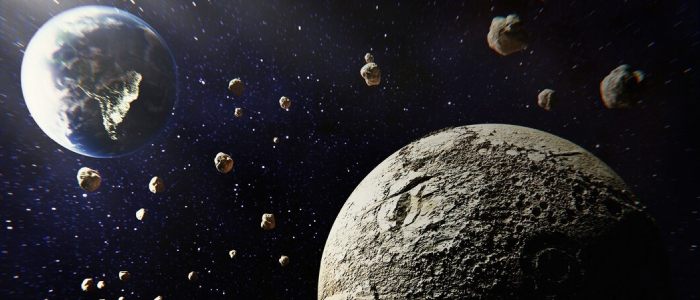It is one of the most complicated processes in the universe to form planets. Planets like those in our solar system form over millions of years in a series of physical processes. From the earliest dust particles in a protoplanetary disk to full-fledged planets, understanding these processes reveals how planetary systems evolved throughout the cosmos.

What Does ‘’Planet Formation’’ Mean
The creation of planets from gas, dust and other materials in a protoplanetary disk around a young star is called planet formation. They involve a series of stages that each help form planets.
Planetary systems like the sun started as a disk of gas and dust rotating around a new star. That disc is a protoplanetary disk. Particles within the disk stick together and, over time, become planetesimals, protoplanets, and eventually full planets.
Early Planet Formation Protoplanetary Disk: The Birthplace of Planets
Planet formation begins in the protoplanetary disk, a disk of gas and dust spinning about a newborn star. There are elements in this disk, including hydrogen, helium and very few heavier elements like carbon, oxygen and silicon. These are the basic materials for planets.
Particles in the disk stick together as it turns. The small dust grains grow into larger objects through accretion. Permanent collisions in the disk allow these particles to combine into planetesimals, the building blocks of planets.
Planetesimals: The Seeds of Planets
The dust grains continue to smash together to form planetesimals – tiny rocky or icy bodies a few meters to several kilometres in size. These planetesimals form the seeds of planet formation.
At this stage, gravity becomes involved. The larger planetesimals pull more material from the disk. Planetesimals eventually collide and become protoplanets.
Protoplanets and Core Accretion Protoplanets: Growing Planets
At some size, planetesimals become protoplanets. Protoplanets are larger bodies that continue to grow by attracting and merging with other planetesimals along their route. These violent collisions can alter the developing planets. Over millions of years, they accrete material and become larger protoplanets.
At this stage, core accretion occurs. Protoplanets with large masses form cores. Where temperatures are lower, the protoplanet may collect ice and gas that will form gas giants like Jupiter and Saturn.
Giant Planet Formation
Gas giants are thought to form through core accretion. As the core of a protoplanet gets large enough, it begins to attract great quantities of gas from the disk around it. This gas collects around the core and forms an atmosphere. The gas giants of our solar system – Jupiter and Saturn – are examples of such planets forming.
Ice planets like Uranus and Neptune form farther away from the star if it gets cold enough for ice to form. These are sometimes called “ice giants” because they contain both gas and frozen elements, unlike gas giants.
Terrestrial Planet Formation and Evolution
Terrestrial planets form closer to the star, but it is too hot for gas and ice to form in large amounts. Such rocky planets form mainly from metals and silicates that converge from the protoplanetary disk.
Protoplanets in the inner regions of the disk collide to form larger rocky bodies with metallic cores. Earth’s formation can be very violent – impacts from other planetesimals and protoplanets alter the surface and interior of the planets.
The Final Stages: Clearing the Disk
Planets still forming begin to remove debris from their orbits. Growing planets pull smaller objects away or attract them, forming paths that eventually become relatively straight in the protoplanetary disk.
At this stage, we go from a protoplanet to a planet. Over time, the remaining gas in the disk disperses due to the young star’s radiation and stellar winds and forms an equivalent planetary system to our own.
Role of Migration in Planet Formation Planetary Migration

The most surprising find of the last few years is planetary migration. Traditional models predict that planets form and remain in fixed orbits, but observations of exoplanets suggest many planets move inward or outward from their starting positions.
This migration is attributed to interactions between the forming planet and the gas in the protoplanetary disk. For example, gas giants may form outside a disk and migrate inward – this is why astronomers have found many “hot Jupiters” – gas giants orbiting very close to their host stars.
Planetary Evolution Following Formation Planetary Atmospheres
Planets have not yet evolved completely. Planets atmosphere, surface and internal structure can change dramatically over time. For terrestrial planets, volcanic activity and impactor impacts can alter their surfaces and introduce gases into their atmospheres.
For gas giants, atmospheric evolution depends on distance from the star and interactions with other planets. For instance, the enormous gravity of Jupiter shaped the orbits and physical characteristics of many of its moons and smaller planetary bodies in the solar system.
Long-Term Evolution
Over billions of years, planets change by cooling, tectonic activity and erosion. Smaller planets like Mars have seen much of their activity stop and have become cold and barren.
Einige planets – especially those in binary star systems or those that collide strongly with other massive bodies – will change their orbits or even be ejected from their star systems.
Conclusion: Study of Planet Formation Currently Ongoing
Planetary formation and evolution is a research topic. We continue to learn how planets form and change throughout the universe by finding more exoplanets and improving our models. Learning about such processes also gives us clues as to whether other stars might have habitable planets.
Planet formation involves several stages. From dust particles accreting in a protoplanetary disk to gas giants and rocky worlds forming, each stage of planet formation reveals more about the cosmos and us.
